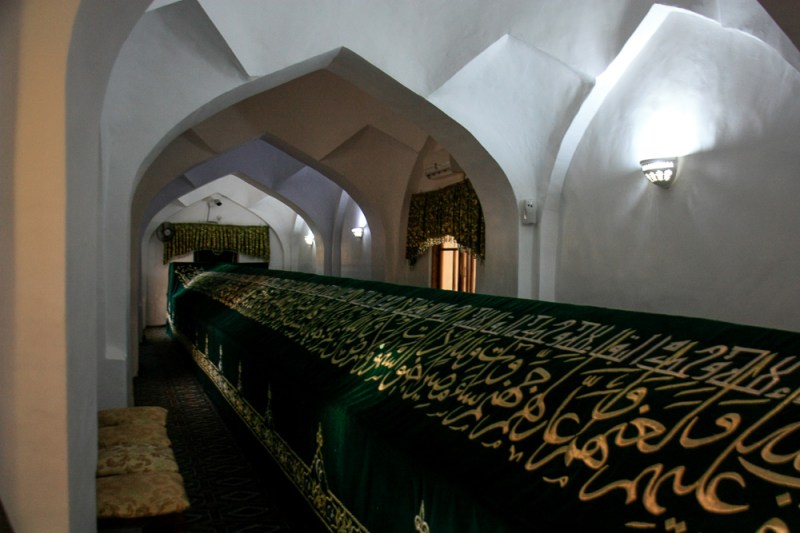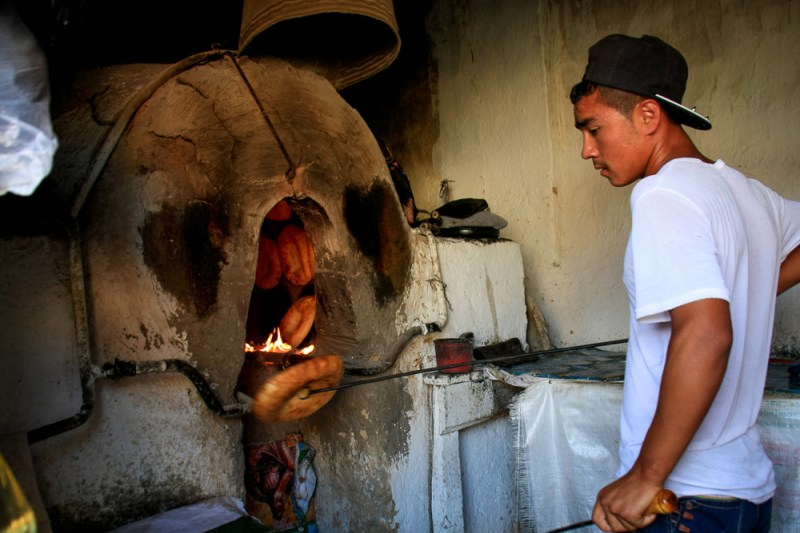 Samarkand and Bukhara, Uzbekistan
Samarkand and Bukhara, Uzbekistan
Let’s just cut to the chase here — Samarkand and Bukhara are home to some of the most awe-inspiring sites of Central Asia and the Silk Road. No place epitomises and evokes the bygone era as much as Uzbekistan’s historical circuit.
At one point, this was pretty much the centre of Asia, if not the world. Founded in the 600s BC by the Sogdians, Samarkand was taken by Alexander the Great in the 300s BC, then a litany of other empires of Turkic, Mongol, and Persian origins until Genghis Khan crushed everyone in the 1200s. Most of the preserved buildings so celebrated now comes down from the Timurid empire of the 1300s-1500s, founded by Amir Timur, better known in the West as Tamerlane or Timur the Lame due to battle injuries. They fell into disrepair when the Uzbek Shaybanids moved their capital to Bukhara, but when Russia took over in the 1800s, the city began to see life again and eventual archaeological restoration.
Timur brought with him a wave of religion and culture, despite being a ruthless warlord. Sparing the lives of artists, architects, and craftspeople, he had the capital built up in a never-ending state of construction, doing so with Islamic symbols and a promotion of the religion to legitimise his own rule.

And it’s because of that and for a hope of good luck that Timur brought back what he thought, and what people here think, are the remains of the biblical prophet Daniel — you know, the one from Babylon thrown in the lions’ den? The claim is a bit dubious, as at least five other places claim to have his tomb too, with the most likely one being in Susa, Iran. But alas, in a simple unordained mausoleum surrounded by praying devotees lies an 18m long sarcophagus. Obviously Daniel was never that tall, but the local legend says that his body grows a few centimetres a year, so…

Timur’s own burial place is a large contrast to that. The Gur-e-Amir mausoleum wasn’t actually built to bury him, but a grandson/heir of his who passed away before him. Timur was put here after winter snow blocked the mountain pass to where he was supposed to be buried. Also buried are Timur’s teacher, sons, and Ulugbek, another grandson who ultimately became ruler. Not knowing any of these facts does not reduce at all the experience of entering the awe-inspiring interior room, covered in golden patterns from top to bottom. However, its exterior, domed with minarets, are a precursor to some of the most famous mausoleums in India, like Humayan’s Tomb and the Taj Mahal — the Mughal Empire of India are actually descendants of Timur!




And if Timur’s mausoleum doesn’t quite cut it, well… there’s the Shah-i-Zinda complex, centered around a relative of the prophet Mohammed, but also the final resting place of some of Timur’s relatives. An avenue of blue materialises at the top of the stairs, each building boasting stunningly detailed façades covered in florals, Islamic scriptures in Arabic, geometric patterns, symmetry, arches, and more.







In one of the mausoleums, there are photos of Samarkand before it was restored by the Russians. While they did do an impressive job, they did take some liberties, with some haphazardly-drawn or mismatched tiles. But the fact that the whole complex is still standing, despite surviving several large earthquakes, is a testament to its construction.




Adjacent to Shah-i-Zinda are a Jewish cemetery and Muslim cemetery, side by side. The latter will be home to President Karimov’s final resting place; we witnessed a prayer happening around his coffin in the courtyard of the Hazrat-Hizr mosque just across the street. Prayers seemed to be happening every five minutes, and the one we attended had people shedding tears.

Speaking of mosques, the most impressive one by far is the one commissioned by Timur’s Chinese wife, Bibi Khanym, built to an incredibly tall 41m height, dwarfing everyone and everything. Though it’s a marvel to behold, it hasn’t survived the earthquakes so well, and restoration is slow and ongoing — the buildings and gates are leaning, the tile- and brick-work crumbling, the interiors in ruins.




But the most well-preserved and well-known sight in Samarkand, the one that makes its appearance in countless Uzbek music videos and postcards and posters everywhere, is definitely the Registan. The plaza itself used to be the centre of the city and a giant bazaar, but the primary focus is on the three medressas (Islamic schools) facing each other, each built at a different time. By day or by night, sunlight or artificial light, the sight of giant façades is one I simply cannot describe in words.






The Ulugbek medressa was built in the 1400s by the namesake ruler/astronomer/mathematician/physicist, who also used it as a teaching space for those subjects. It was built in a mere three years! The other two mosques, commissioned in the 1600s by the ruling Shaybanids, are intended copies, with the Sher Dor medressa’s façade featuring striped lions that look like tigers (in direct violation of the Islamic tenet of not depicting live creatures), and the Tilla-Kari medressa featuring two floors of rooms accessible from the outside, all with doors perfectly ensconced in arches. The Sher Dor took 17 years to build and still isn’t as structurally sound as the Ulugbek medressa. All are leaning a little bit, but despite that, these buildings have held up for centuries!



Inside each medressa is a courtyard surrounded by lecture halls and dormitories, with the lower floors now entirely converted to souvenir shops. Not a huge fan, but it does give some life to the place. The Tilla-Kari does feature an interior mosque decked in gold, however, akin to the Gur-e-Amin. No less impressive!









While each of these places has a sizeable amount of foreign tourists, it’s eclipsed entirely by domestic tourists and locals just enjoying the many park spaces, pedestrian-friendly infrastructure, and worship areas all over the city. There’s even an old town, bafflingly entered through a gate, as if purposely hidden from visitors as something ugly — far from that, I found it charming. This city may thrive on tourism and has likely become affluent from it, but it’s still very much lived-in and friendly, with people frequently engaging us in conversation and asking us for photos, or offering us something to sample or examine, like at the bazaar or an old town bakery.







On our way out of Samarkand, 90 km south and after a beautiful mountain pass, we visited the town of Shakhrisabz, best known as the birthplace of Timur. While the points of interest were in a refreshingly unrestored, unvarnished form, they were curiously connected by an enormous new, modern park that looked a little out of place, surrounded by faux-traditional new apartments, shopfronts, and vast spaces that really needed some filling. Starting to reach a bit of mosque/medressa fatigue, we simply appreciated more of the spectacle, including the crumbling remains of the gate of Ak-Saray, Timur’s summer palace.



Arriving at Bukhara to another plethora of beautiful mosques and medressas, it was a little difficult not to lose the forest for the trees. It’s one of the largest religious centres of Central Asia, and home to countless historical figures and poets (like Rudaki, who Tajikistan still claims as one of their own), but I admit that the importance was a bit lost on me, given no prior knowledge. Heike, Tom, and I spent our first time hunting down every important site: as beautiful as the brick-layed Kalon Minaret was, as imposing as the walls of the Ark were (in contrast to the boring remains of the bombed city inside, converted to drily-presented museums), as colourful as the façades of the many medressas were… we were left rather unmoved. Perhaps a little bit of “mosque fatigue”!










I made a little “pilgrimage” to the Chashma Ayub mausoleum, purportedly built over a spring that appeared after the biblical Job struck the ground. What I found instead was a puzzling museum about water, with a well in the middle of it.

Opting to no longer blindly pay and enter every tourist site possible, we spent the next couple days absorbing the atmosphere slowly. We did find some favourites — just sitting on a bench in the vast courtyard of the Kalon Mosque, refreshingly devoid of souvenir stalls, at late-afternoon prayer time was a wonderfully peaceful experience. As Uzbekistan’s strict anti-extremism laws prohibit loudspeakers you’d normally find at any mosque in the Muslim world, a man sung the call to prayer into a wall, echoing through the halls of the entire complex beautifully, almost wistfully, with nothing but a still silence in response. Then we spent sunset with some new friends, sipping beers on a terrace overlooking the town.

We did one better when we wandered off to the carpet bazaar, when we were invited to climb a ladder to the top of the multi-domed roof where carpets were hung. In that moment looking down, I could imagine how Bukhara was in its heyday, a 16th-century all-out bazaar surrounded by a skyline of blue-domed mosques and minarets.


We spent an afternoon watching the old town life in front of the Char Minar, a medressa with four faux-minarets (which happens to be featured on the cover of the guidebook I’ve been carrying around for months now!), with children playing nearby, eager to talk to any foreigners around.

We spent a morning writing postcards in a shady area by the Lyabi-Hauz plaza, sipping tea next to the pool and surrounded by locals catching up with their friends.

We spent a few afternoons walking around the old town past unrestored and untouristed medressas and mosques, either locked and left to ruin, converted to a makeshift residence, or still used.




And as we wandered the twisty streets and alleys, we were invited into the home of Sabrina, an ethnic Tajik (as are most residents in Samarkand and Bukhara) eager to practice her English and show her hospitality — that is, showering us with food and coffee. As with a surprisingly large amount of Uzbekistani people I’ve met, she works in China (and speaks Mandarin!), living in Guangzhou for extended periods of time conducting her own trade in Uzbek and Tajik fabrics. Engaged to a local man living and working for extended periods of time in Moscow, yet impressively uncompromising on her independence and business, it looks like they’ll have to work out living arrangements!



Amid our relaxing afternoon getting to know each other, with curious friends and neighbours coming and going, we did get to learn a few quirks of local life from Sabrina — to often hilarious anecdotes. A tangle of hovering pipes seem to connect every house from the outside; they’re for natural gas to be intended to be used for heating and cooking. But Sabrina and her mother refuses, burning firewood instead, because in her words, “Gas sometimes big boom.” And after revealing that people with wealth in Uzbekistan often hide their gold in their walls due to lack of secure places: “You no kill me okay?” Heh.
Sure, both Samarkand and Bukhara present their most tourist-friendly faces to the world, and that’s cool. But I’m glad that there’s life that still goes on behind and in spite of it, and people who still call it home, tracing back for centuries. To me, that’s what makes it feel real.


Wonderful post, you’ve got some of the most incredible photos! I’m very interested in visiting mainly Samarkand. Best regards.
I am going there this year. Looks like a fantastic place and a feast for my camera.